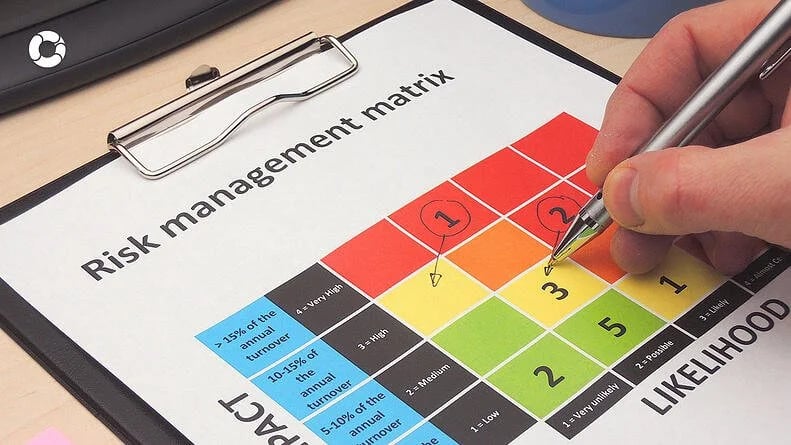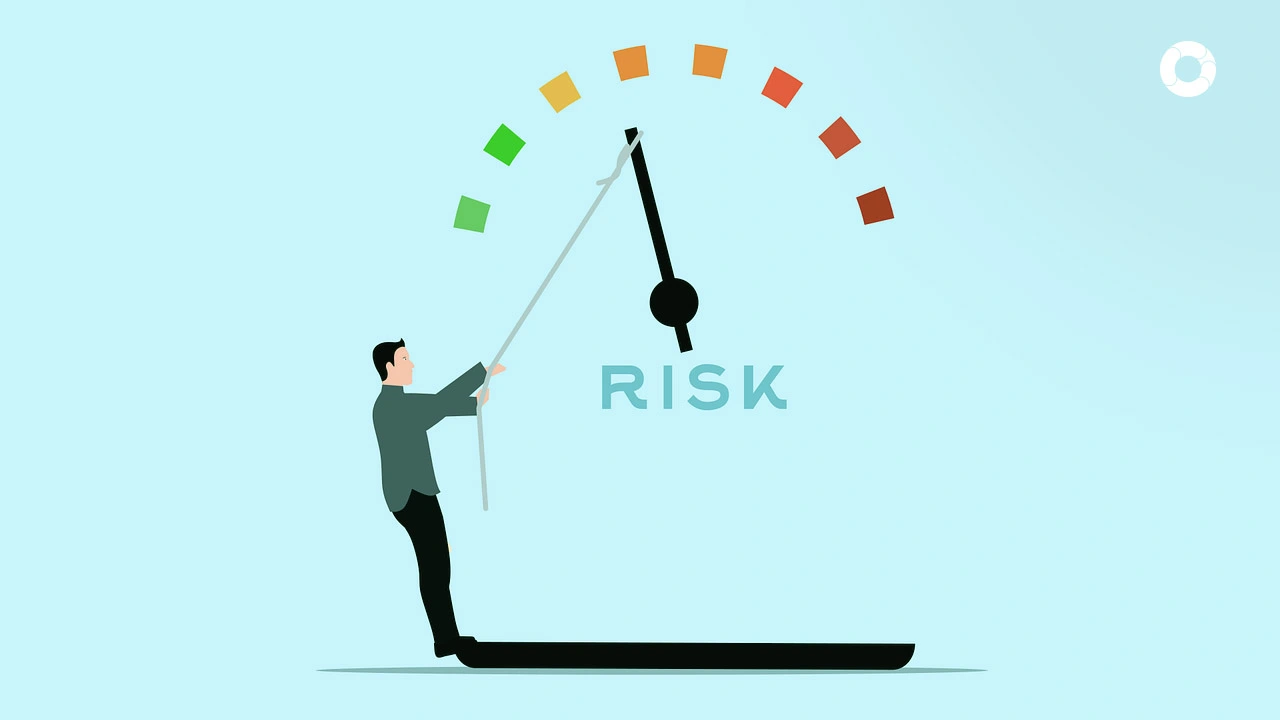3 tips to identify risks

Identifying operational risk is the crucial first step toward effective risk management. Operational risk refers to the potential for loss resulting from inadequate or failed internal processes, people, systems, or external events. In the context of Governance, Risk, and Compliance (GRC), addressing operational risk is paramount for ensuring organizational resilience and adherence to regulatory requirements. This introduction will explore three key aspects you should consider when identifying and managing operational risk within a robust GRC framework.
Firstly, understanding the scope of operational risk is essential. Operational risk encompasses various elements, including human error, system failures, fraud, and natural disasters. It differs from other types of risks, such as credit or market risk, because it is inherently linked to the internal workings of an organization. Identifying operational risk requires a comprehensive analysis of all business processes and their potential failure points. This involves examining the efficiency and reliability of internal systems, the competence and behavior of employees, and the adequacy of internal controls. By thoroughly understanding the scope, organizations can better prepare for and mitigate potential operational disruptions.
Secondly, integrating operational risk management into the broader GRC strategy is crucial. Governance, Risk, and Compliance (GRC) is a holistic approach to ensuring an organization achieves its objectives, manages uncertainty, and acts with integrity. Effective GRC frameworks align operational risk management with corporate governance and compliance efforts. This integration ensures that risk management practices are not siloed but are part of a unified strategy that supports decision-making and accountability at all levels of the organization. Implementing an integrated GRC approach helps organizations maintain regulatory compliance, safeguard their reputation, and foster a risk awareness and responsibility culture.
Thirdly, the continuous monitoring and improvement of risk management practices are vital. Operational risk is dynamic, with new threats and vulnerabilities emerging regularly. Therefore, organizations must establish ongoing monitoring mechanisms to promptly detect and respond to risk environment changes. This involves regular risk assessments, audits, and review of risk management policies and procedures. Leveraging technology, such as automated risk management software, can enhance the efficiency and accuracy of these processes. Additionally, fostering a culture of continuous improvement encourages employees to identify and report potential risks proactively, ensuring that the organization remains agile and resilient.
1. Know the context
Identification begins with an analysis of the context to establish the conditions in which the organization finds itself and the circumstances surrounding it. This step can be divided into two:
- Analysis of the internal context, in which the organizational definitions are studied (mission, vision, internal structure, human, physical, financial resources, etc.) and everything associated with the strategic part of the company.
- Analysis of the external context, which includes the analysis of the national and international environment. This includes the stakeholders related to the company, political and economic aspects, social and environmental conditions, the situation of the country and the industry. In short, all the elements that influence the organization's performance.
2. Define risk levels
After analyzing the context, define the levels to identify risks. These can be strategic or operational.
Strategic risks are those that can impact the overall mission and strategic objectives of the organization. These risks often have long-term implications and can affect the company’s competitive position, market reputation, and financial stability. Examples of strategic risks include changes in market dynamics, shifts in consumer preferences, regulatory changes, and major technological disruptions.
To define strategic risk levels, organizations should:
- Identify Key Strategic Objectives: Determine the primary goals and missions of the organization. This could include market expansion, product innovation, customer satisfaction, and financial growth.
- Assess Potential Impacts: Evaluate how different risks could affect these strategic objectives. Consider both positive and negative impacts, such as opportunities for growth or threats to market share.
- Rank Risks Based on Impact and Likelihood: Use a risk matrix to rank strategic risks based on their potential impact and likelihood of occurrence. This helps prioritize risks that require immediate attention and resources.
Operational risks arise from the organization's day-to-day activities. They are often more immediate and can affect the efficiency and effectiveness of business processes. Examples of operational risks include system failures, human errors, fraud, supply chain disruptions, and compliance breaches.
To define operational risk levels, organizations should:
- Map Business Processes: Identify and document all critical business processes within the organization. This includes processes related to production, sales, finance, HR, and IT.
- Identify Potential Failure Points: Analyze each process to identify points where failures could occur. Consider factors such as human error, system vulnerabilities, and external dependencies.
- Evaluate Risk Severity and Frequency: Assess the severity and frequency of potential operational risks. Use historical data and industry benchmarks to estimate the potential impact and likelihood of each risk.
- Develop Risk Categories: Categorize operational risks into different levels based on their severity and frequency. Common categories include low, medium, and high risk. This categorization helps prioritize risk mitigation efforts.
Integrating Risk Levels into Risk Management Practices
Once risk levels are defined, it is essential to integrate them into the organization’s overall risk management framework. This includes:
- Developing Mitigation Strategies: For each risk level, develop specific mitigation strategies. High-risk areas may require more robust controls and frequent monitoring, while lower-risk areas may need basic preventive measures.
- Implementing Monitoring Mechanisms: Establish mechanisms to continuously monitor risks at different levels. This could include regular audits, performance metrics, and real-time monitoring systems.
- Training and Awareness: Educate employees about the defined risk levels and the importance of adhering to risk management practices. Promote a risk-aware culture where everyone understands their role in managing operational risks.
3. Analyze the risk
After knowing the context and defining the levels, you must make a detailed risk analysis. This analysis should include the following aspects:
- Name the risks: it is necessary to determine several aspects related to the risks, such as name, meaning, description, generating agent, causes, and effects.
- Describe the risk: once the risk has been identified and precisely named, you must describe what it consists of, i.e., how you consider that it could occur. This clarifies its identification and helps to avoid duplication or inclusion of apparent risks. In this way, it is easier to recognize potential failures and identify solutions that can be implemented.
- Determine the generating agents: it is essential to know which are the generating agents of the risks, such as people, things, events, actions, or circumstances that have the capacity to affect the company's activities. Normally we will find several generating agents and not just one for each identified risk. This process facilitates the implementation of the necessary controls to neutralize the impact of each determined agent.
- Recognize the causes: you must give greater importance to those that can be controlled, whether they are inside or outside the organization.
- Knowing the effects: finally, the process culminates with identifying effects, which are all the losses the company may suffer if it does not meet the objectives set. Among the most representative effects that affect organizations are economic losses, loss of information, loss of assets, interruption of the operation or service, damage to the environment, deterioration of the image, loss of market, and death or injury to people.
Pirani Risk, a solution designed to facilitate your Governance, Risk and Compliance processes; get started for free by clicking the button.
You May Also Like
These Related Stories

Techniques to assess risk in your business

Key elements of the risk management system

Operational Risk Management: Strategies and Examples

Legal risk management in organizations

How to make a risk matrix for your company



No Comments Yet
Let us know what you think